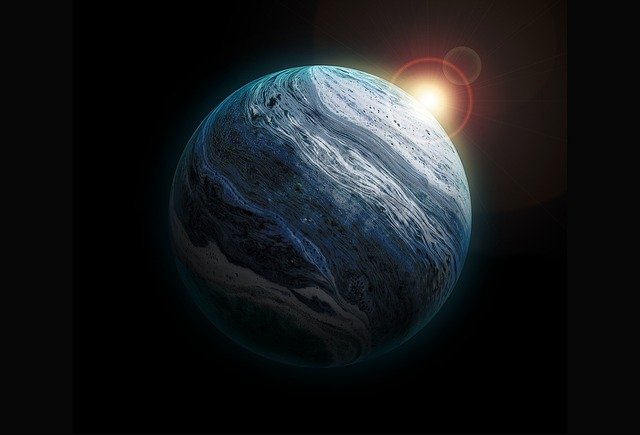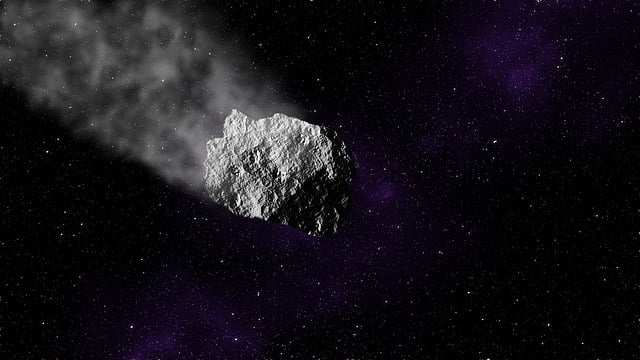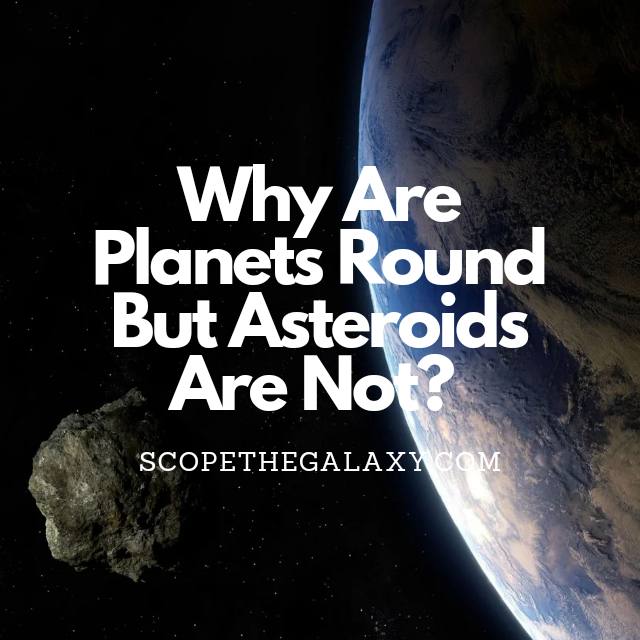*This post may contain affiliate links. This means we may make a commission if you purchase an item using one of our links*
Planets are round due to the effects of gravity, which pulls equally from all sides, creating a three-dimensional circle. On the other hand, asteroids come in a range of irregular shapes because their gravity isn’t strong enough to pull them into a sphere. Instead, they are shaped from space material coalescing and collisional destruction.
Discover why the planets in our solar system are round and why some are rounder than others. Join us as we explore comets and asteroids and learn whether or not a planet can ever be perfectly round.
Why Are Planets Round?
Table of Contents

There are eight planets in the Milky Way that differ significantly in size, composition, and characteristics. Still, one thing they all have in common is that they’re round rather than flat, triangular, or cuboid – so why is this?
Planets form when space material gathers together until the mass is large enough to possess sufficient gravity. At this point, the planet is big enough to clear space debris from its path of orbit around a star and can use its gravity to attract more mass.
This gravity pulls equally from every side, creating a round mass. Picture a bicycle wheel; the center represents the planet’s core exerting gravity in every direction (like the spokes). And this creates a circular shape.
However, a bicycle wheel is only two-dimensional, which is why it’s flat. A planet is three-dimensional, so it creates a 3D circle or sphere.
When the planets within our solar system first formed, they were collections of molten material with a central gravitational force that exerted an equal pull in all directions and shaped the mass into a sphere. When the planets cooled, they maintained this spherical shape, but the spinning motion caused them to bulge at the center.
Why Aren’t Asteroids Spherical?

Many smaller bodies within the solar system do not possess spherical bodies because their gravity is too weak to smooth out their shape.
For example, Comet 67P is a four-kilometer-long mass almost a trillion times lighter than Earth. The escape velocity for this comet (i.e., the speed you would need to travel to overcome its gravitational field) is one m/s – easily achievable for a human.
Compare that to Earth, whose escape velocity is 40,000 km/h, and you can see how this gravitational strength impacts. Earth is almost perfectly spherical (with an increased thickness of only 0.3% in the middle), whereas Comet 67P is shaped like a rubber duck!
Of course, an asteroid can be spherical if it is large enough. Generally, a rocky object measuring 400 km or more will have enough gravity to sculpt into a rounded mass. So asteroids can be rounded, but they don’t have to be.
Why Aren’t All Planets Round?
Look at any planet, and you’ll see that it’s round. Still, most planets aren’t perfectly spherical, and if you look closer, you’ll see an equatorial bulge, making the planet look more like a ball that has been slightly squashed from the top and bottom.
This happens because when an object spins, the matter along the outer edge has to travel further (and therefore faster) than the inner materials. The equator is an imaginary line around the circumference of a planet halfway between its north and south poles.
The edges of this equator are held together by gravity, but that doesn’t mean they don’t want to escape from the planet’s pull. As the edge material tries to pull away from its planet, it creates a bulge around the equator, which is why most planets are not perfect spheres.
For example, if you measure the circumference from pole to pole and compare it to the equatorial circumference, you will discover that Saturn is 10.7% thicker in the middle and Jupiter 6.9%. In contrast, Mercury and Venus are the most spherical planets in our galaxy, with almost perfectly rounded bodies.
A variation in speed causes this difference in shape. Take Saturn; it rotates extremely fast (a day here would only last for just over 10 hours), and this increased speed creates a strong centrifugal force that pushes the central mass outward.
In general, the faster a planet spins, the less round it becomes because of the increased centrifugal forces.
Can Planets Be Perfectly Spherical?
Planets aren’t perfect spheres; they are what scientists term “oblate spheroids.” This is because a perfect sphere is a constructed mathematical image. Natural objects can come close to achieving perfect sphericity, but a planet will not achieve this status.
This is because they have irregular surface features such as mountains, valleys, ice, water, etc. And they are affected by tidal forces.
When a planet spins, the centrifugal force causes anything loose to push outward. So, to bigger and lesser degrees, a planet will always bulge along its equatorial plane.
The central gravity of a planet is not the only thing that affects its shape – with so many irregularities scattered on and around the planet, achieving a perfect spheroid would be virtually impossible.
Still, the planets could be perfectly spherical if they didn’t spin. When the molten masses first cooled, cementing a spheroid shape, they could have been perfect. For example, if the Earth didn’t turn once it cooled, it would have been a perfect sphere.
Every planet we know of does spin about its axis, though. Hence, the effects of centrifugal forces, combined with the irregularities of a planet’s composition, mean that we’re unlikely to find one that is a perfect sphere anytime soon.
Summary
Planets are round because their vast mass exerts a gravitational force that sculpts them into circular objects. This gravity extends equally in all directions, but the centrifugal force from a planet’s spin prevents it from being perfectly rounded.
Asteroids can be spherical if they have enough mass, but many are too small to exert sufficient gravity to pull them into shape. So they float through space as an array of shapes and constructs.
References
Why Are Planets Round? | NASA Space Place – NASA Science for Kids
Why Are Planets Round? | Britannica
Why are planets round? (theconversation.com)


